




HFA and Bona Design Lab continue to reimagine sites and stores on behalf of our c-store partners all over the world. In HFA’s case, the emphasis is on solving problems by leveraging our decades of experience in architecture and engineering in the convenience retail space. We have the honor of working with some of the country’s largest convenience retail chains, including Love’s Travel Stops, Kum & Go and EG America.
Joseph Bona, Bona Design Lab Founding Partner & President
For its part, Bona Design Lab elevates the retail experience of its c-store clients. In addition to U.S. companies such as Shell Select and Alltown, the boutique specialty firm has delivered leading-edge design and branding to c-stores such as Migrolino (Switzerland), Ipiranga (Brazil) and Adnoc Oasis (UAE).

In the following whitepaper, drafted in summer 2021, HFA’s James Owens, a veteran architect in the c-store space, and Joseph Bona, longtime store designer and founder of Bona Design Lab, take a step back to contemplate five specific areas that loom large for the industry as it enters the postpandemic era:
configuring sites and stores to create a frictionless experience that recognizes customers’ differing priorities, from traditional in-person checkout to contactless or
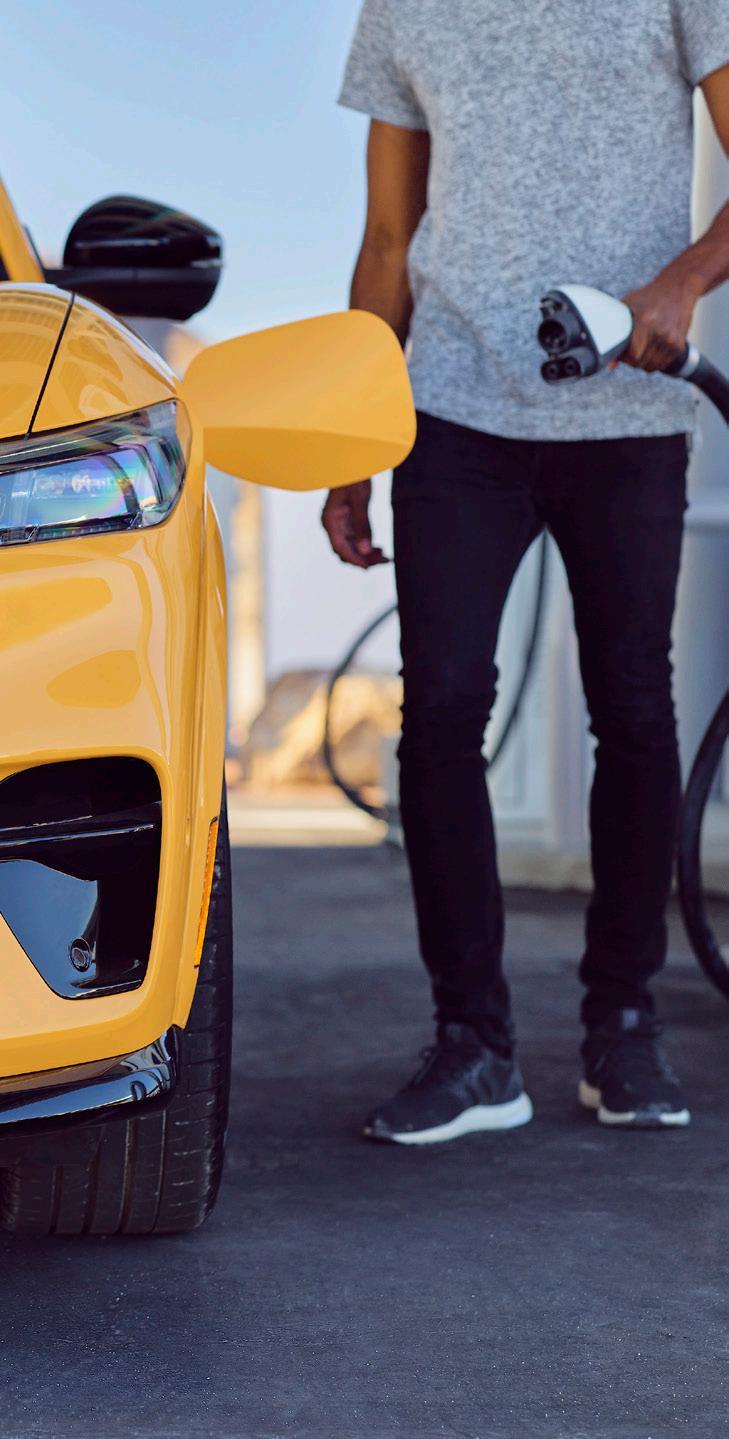
strategies for further elevating food service at a time of extraordinary creativity and robust consumer demand
Anticipating Cultural Shifts finding balanced approaches that honor society’s contrasting impulses around indulgences such as alcohol, tobacco, and cannabis
While the authors are willing to extrapolate based on existing data, this whitepaper departs to some extent from existing “future of c-stores” think pieces. One way to illustrate this is to imagine a Venn diagram with two converging circles, one labeled “Enduring Principles of Site and Store Design,” the other tagged as “Emerging Technologies, Trends and Opportunities.”
During long discussions in the course of drafting this document, the authors returned again and again to the middle of the Venn diagram where the two circles converge. The reasoning: All too often, discussion of the future of c-stores ends up in speculative territory that feels disconnected from the industry’s roots, the realities of the marketplace and what has worked in the past. The authors’ aim was to never lose sight of those important principles, to stay grounded and look in concrete terms at how new or accelerated trends could translate into business opportunities for c-store clients, from the forecourt to the cashwrap.
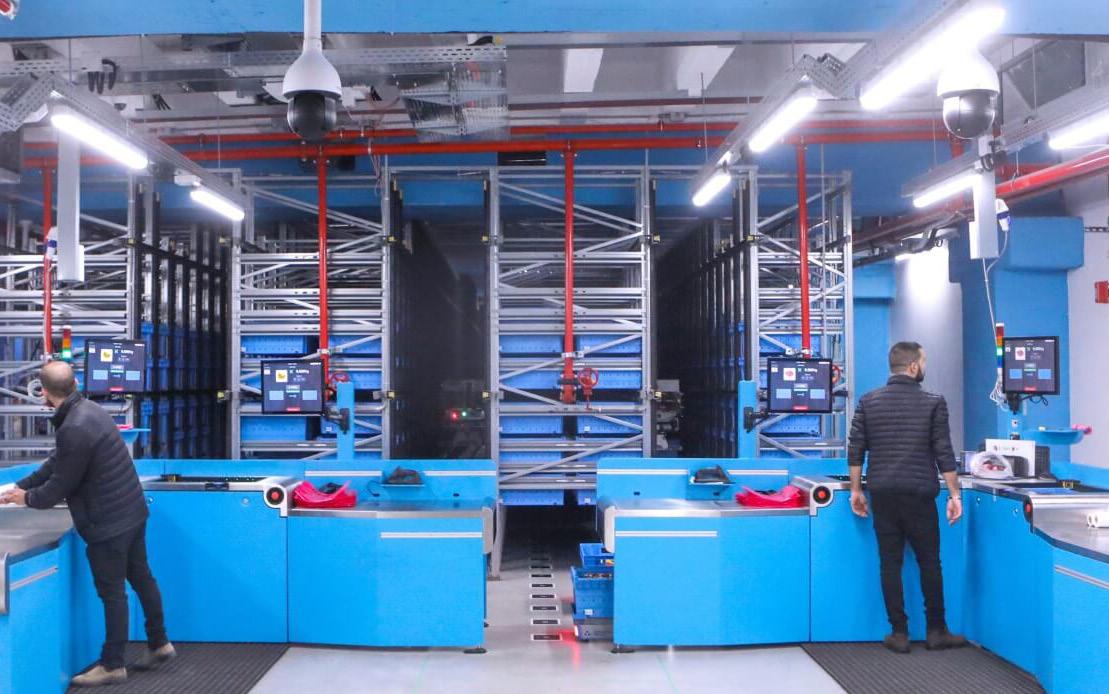 A largely robot-run microfulfillment center by Fabric | getfabric.com
A largely robot-run microfulfillment center by Fabric | getfabric.com
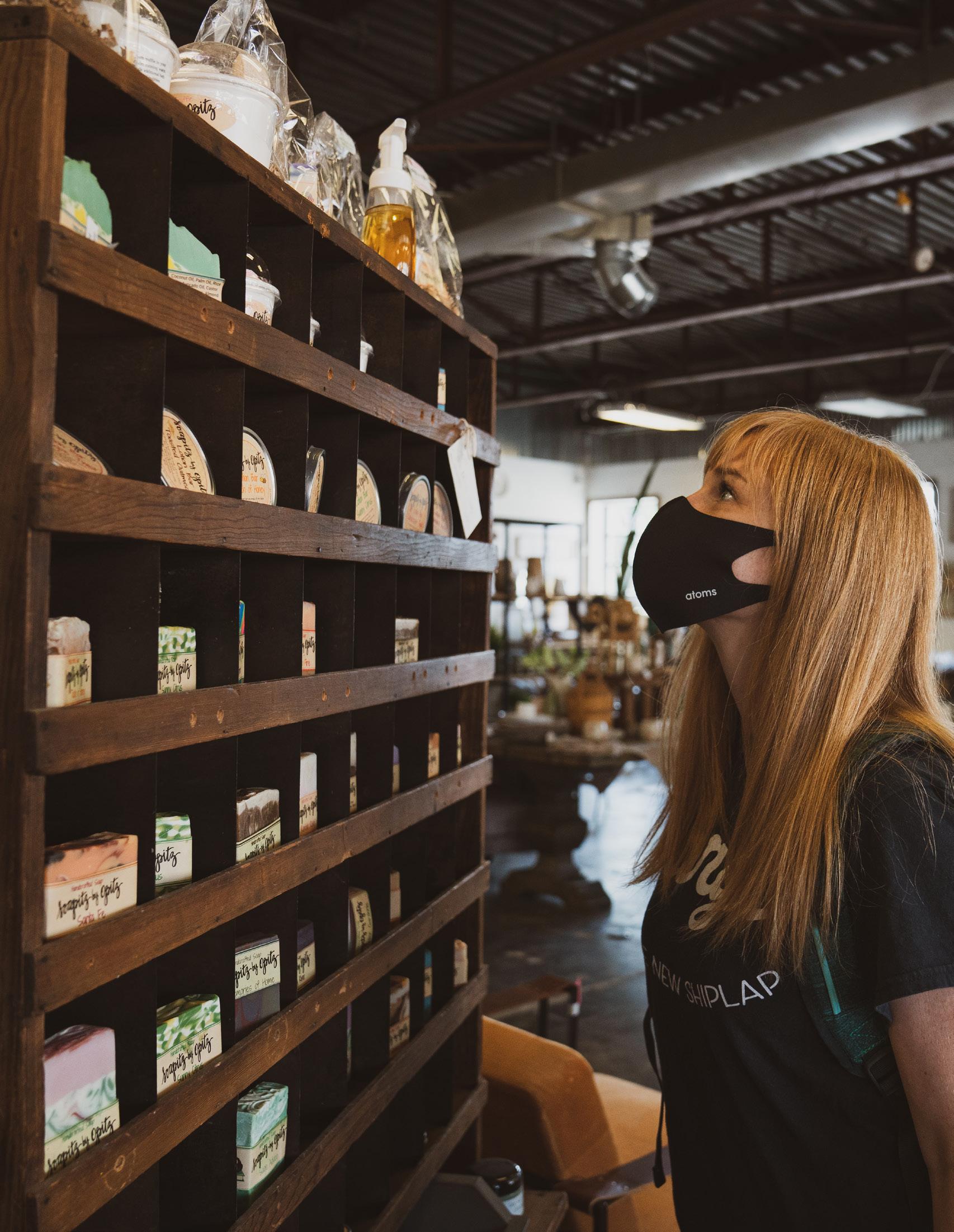
Omnichannel integration is all about making it easy and seamless for people to shop in whatever ways they choose. In the c-store context, that could mean staying in your car for a drive-thru-only experience, using an app to order dinner after the kids’ soccer practice, or walking into a physical location, joking with the cashier, and grabbing a seltzer water and some pistachios on your way home from work.
The challenge is to maintain an elevated brand experience amid the increasing technical complexity of convenience retailing in the omnichannel age. The ultimate goal is to create a customer journey that is so simple you hardly notice how it all came together.

Moving forward, AE and design firms and their c-store clients will need to ramp up their collaboration even further. The conversation should include, not just the c-suite, but also companies’ in-house and third-party experts in areas such as data science, branding, technology and food service.
The reason for that inclusive conversation is simple: There can be zero disconnects; every component of the omnichannel strategy needs to support the company’s brand and business goals. With respect to branding and the customer journey, c-stores need to preserve the traditional “neighborhood feel” and human touch (much more on this in Section 5, ‘Returning to the Corner Store’) while simultaneously crafting environments that delight techsavvy shoppers, some of whom may prefer “contactless” experiences.
In their partnerships with architecture and engineering (AE) and retail design firms, c-store clients increasingly confront a raft of “hard” technical questions as well as “softer” challenges related to branding and the customer journey. The AE focus primarily lies on maximizing the integration of different omnichannel solutions, such as drive-thru lanes, click-and-collect parking spaces, contactless vending machines and more. The goal should be to promote more efficient site and in-store circulation. In addition, new uses of space necessitate a careful second look at traditional, sector-specific approaches to the likes of mechanical engineering, refrigeration and fueling design.
This collaborative approach is one that companies such as Sheetz, Wawa, Dash In, 7-Eleven, Enmarket and Choice Market, to name a few, are taking as they evolve their omnichannel offerings in partnership with technologists and other third parties.[i] The vision of these industry leaders is of a shift in which customers (especially Millennials and members of Gen Z) increasingly rely on mobile apps to order and pay for food, merchandise, car washes, fuel/electric vehicle (EV) charges, and more.
“Every component of the omnichannel strategy needs to support the company’s brand and business goals”
• Reinforcing customer loyalty and spurring return visits by harmonizing site and store design with retailers’ marketing initiatives, including digital ads, “gamified” rewards programs, and influencerdriven social media campaigns employed as part of branded tech platforms. All strands of this web, both physical and digital, need to be brand-right, technically integrated, and mutually reinforcing.
• Reducing labor costs and further boosting convenience and loyalty by optimizing site and store design for contactless payment/vending machines and scan-and-go technologies. These trends were underway prior to the pandemic, but the safety imperative dramatically accelerated them: In the U.K. in July 2020, for example, the tech firms Jisp and Scandit announced a partnership with the Federation of Independent Retailers designed to help 46,000 convenience stores offer scanand-go, home delivery and click-and-collect—all from their customers’ smartphones.[ii] As noted, the challenge here is to make sure tech never eclipses the human touch. Store and site designs will need to be delicately balanced to properly showcase every channel in play…
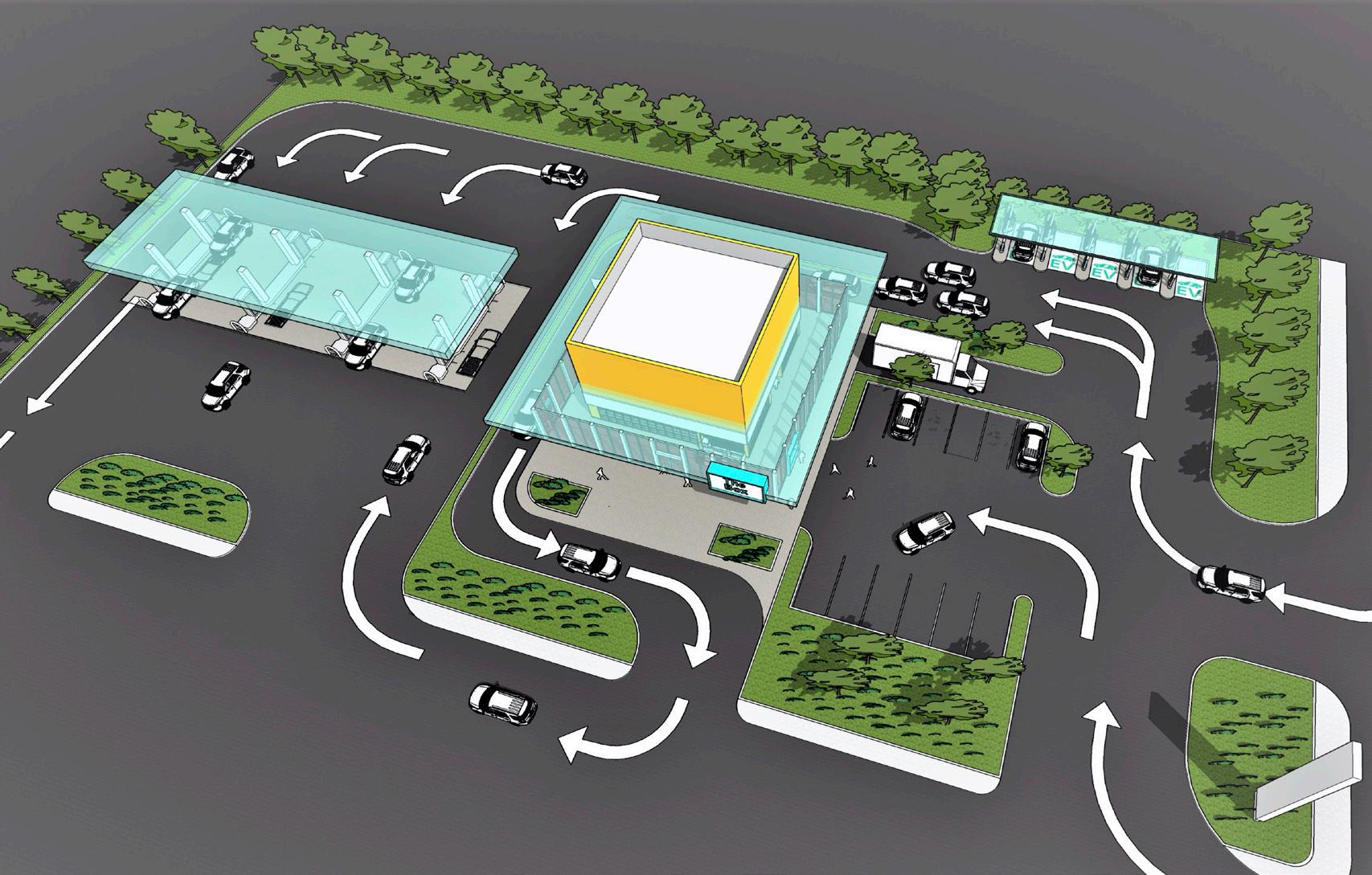
In our view, the integration of omnichannel strategies necessitates careful planning with respect to site and store layout. Changes designed to promote omnichannel integration may bring unforeseen technical challenges— both on the backend and with respect to the customer experience—when taken from a whiteboard to a prototype test store.
Assume, for example, that customers widely embrace self-checkout solutions such as those commonly available in grocery and bigbox discount stores. This has huge potential implications for queuing and circulation inside smaller-format c-stores.
Fully cashier-less, impersonal convenience stores such as Amazon Go will continue to be relatively rare in the near-term and will be located primarily in downtown areas with high labor and real estate costs. The likeliest paradigm for most operators moving forward will be hybrid stores involving a mix of traditional and new-tech solutions.
It’s also critically important to harmonize “concept car” store designs, such as those that envision entirely cashierless operations, with the realities of the road. For example, store associates will continue to be required at thousands of high-traffic c-stores across North America simply because of the need to comply with ID checks and other rules related to sales of alcohol, tobacco, vaping products and, should a change in federal law occur, even legalized cannabis (more on this in Section 3, ‘Grappling with Cultural Shifts’). In our experience, in fact, regulations pertaining to the sale of tobacco and e-cigarettes are tightening in many jurisdictions, not loosening. These changes mean more human interaction, not less, and they continue to affect store layout and design.
Maintaining separation between any self-checkout stations and the traditional POS counter is an approach that can help preserve the integrity of the traditional c-store experience, while making for a fastand-efficient app-driven purchase as well.
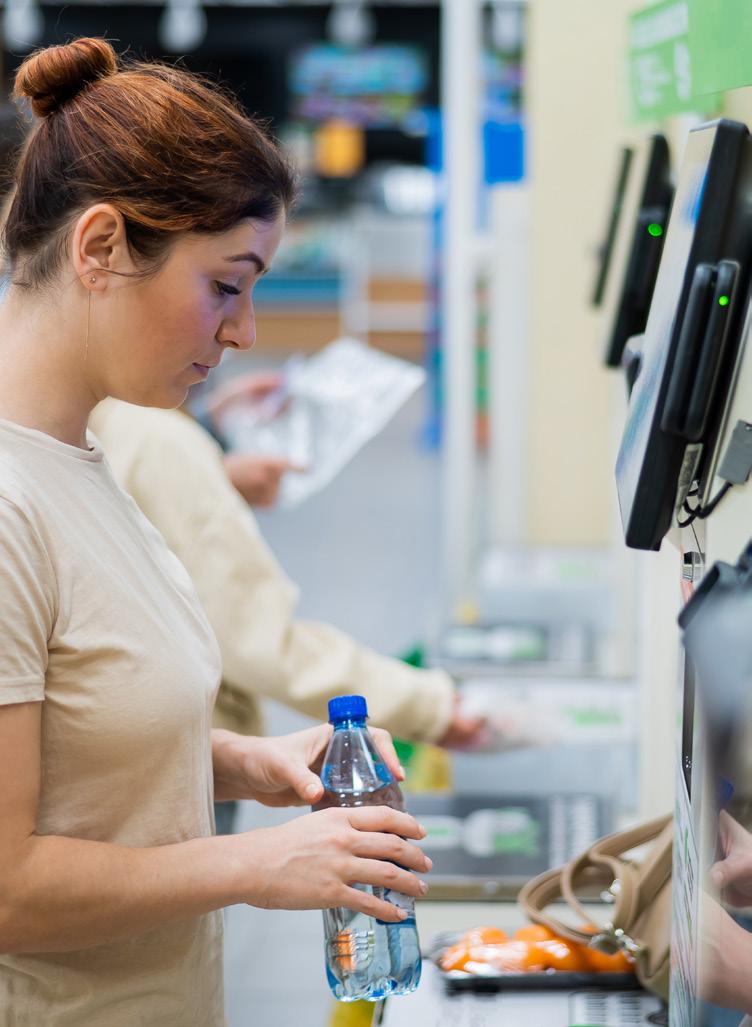
At the largest convenience stores, the selfcheckout station may be attended by an employee whose job is to deal with any problems that could impact the customer experience, such as items that will not scan, rejected credit cards, coupons that fail to process, etc. This, too, could require dedicated space.
As c-store clients revisit their store layouts, they should take into consideration their planned approach to inventory management for all new and retrofitted locations.
Due to the need to control costs, not all operators will have the ability or desire to increase the overall square footage of their new or existing stores. As a result, the installation/ adoption of omnichannel solutions is likely to consume square footage that otherwise may have been used for on-site inventory; this may spur a need for increased creativity on the AE front, such as tighter and more efficient placement of mechanicals.
Fortunately, new approaches to fulfillment promise to make it easier and cheaper for convenience stores to allocate less space for on-site storage, which paves the way for more spacious, design-friendly approaches to operations and circulation.
Take the rise of third-party micro-fulfillment center (MFC) companies. The Israel-based startup Fabric , which raised $136 million for its U.S. expansion in 2019, is opening robot-run MFCs filled wall-to-ceiling with “20,000 totes
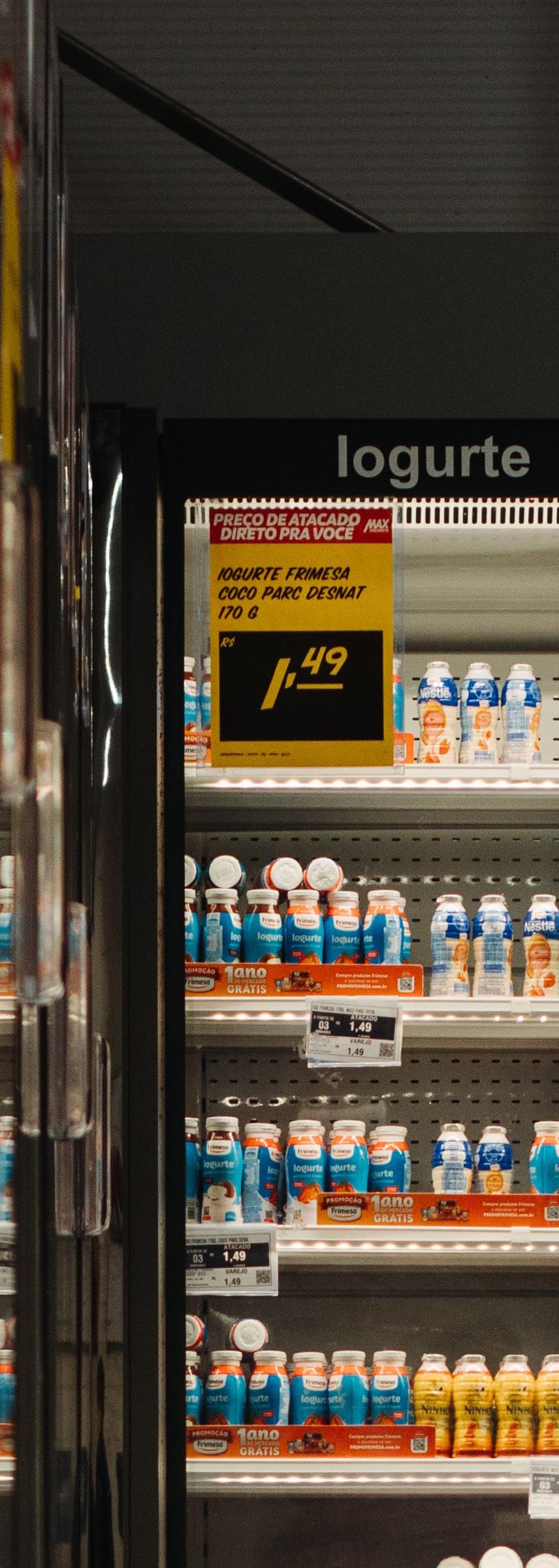
New approaches to fulfillment promise to make it easier and cheaper for convenience stores to allocate less space for onsite storage
… and anywhere from 5,000 to 30,000 SKUs … An order comes in, the machine fulfills that order and spits it out, whether it is for click-and-collect or clickand-delivery. Very little human intervention is required.”[iii]
Third-party MFCs of this type can serve multiple convenience stores, grocers, and drugstore chains within a designated radius, allowing them to run lean-and-mean, rapidly restocked locations. We are already working with c-store operators that seek to optimize square footage by taking advantage of such new approaches for management of prepared food, grocery and alcohol inventory.
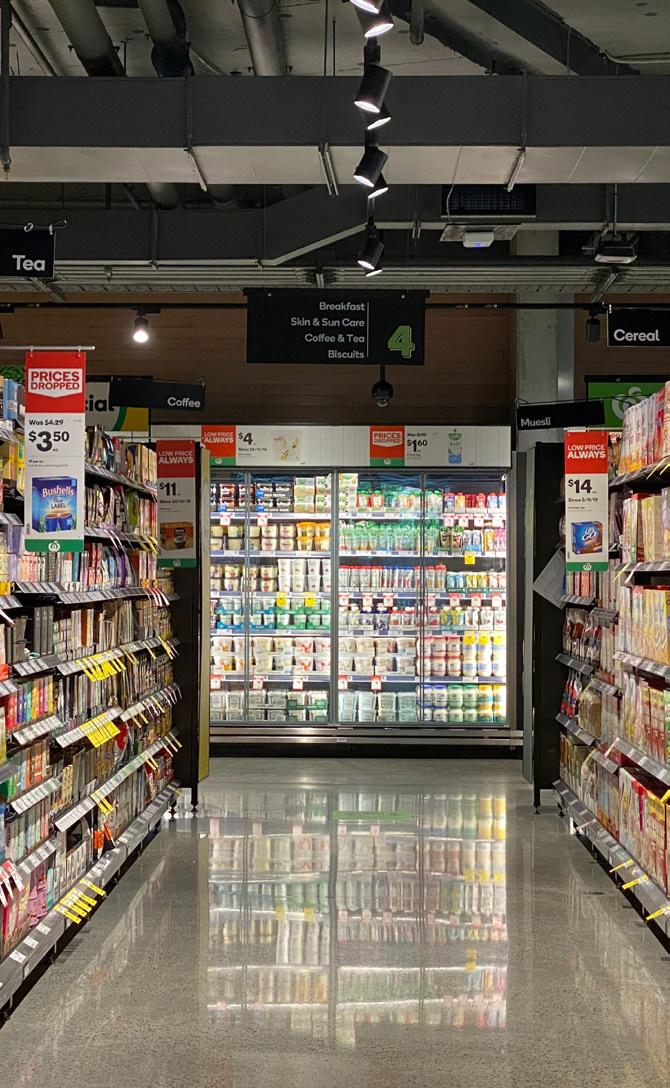
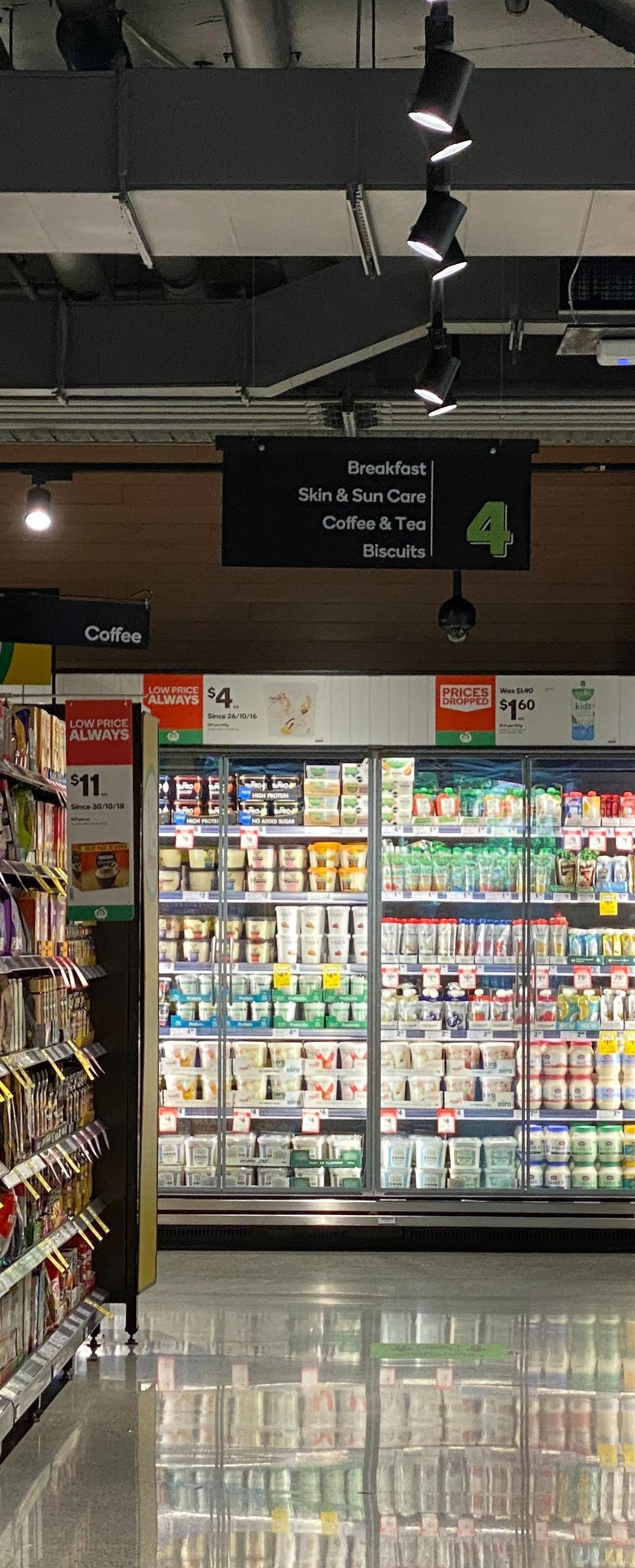
All told, the micro-fulfillment market could be worth about $10 billion by 2026 with an installed base of approximately 2,000 MFCs, according to some projections.[iv] If this proves true, c-store operators should have plenty of access to suitably located MFCs of varying sizes and cost structures.
While MFCs are giving brick-and-mortar c-stores new ways to ramp up their delivery, they could also foster more intense competition.
Founded by a couple of Drexel University students, the startup Gopuff charges just $1.95 to deliver a wide range of mostly c-store staples. Each of its 400-plus MFCs—located in 650 cities in 41 states—can store up to 3,000 products. With 7,000 employees, Gopuff has raised more than $1 billion and has a PitchBook valuation of $8.9 billion. The company recently acquired the BevMo! liquor store chain and is using these locations to facilitate online alcohol and other orders as well.[v]
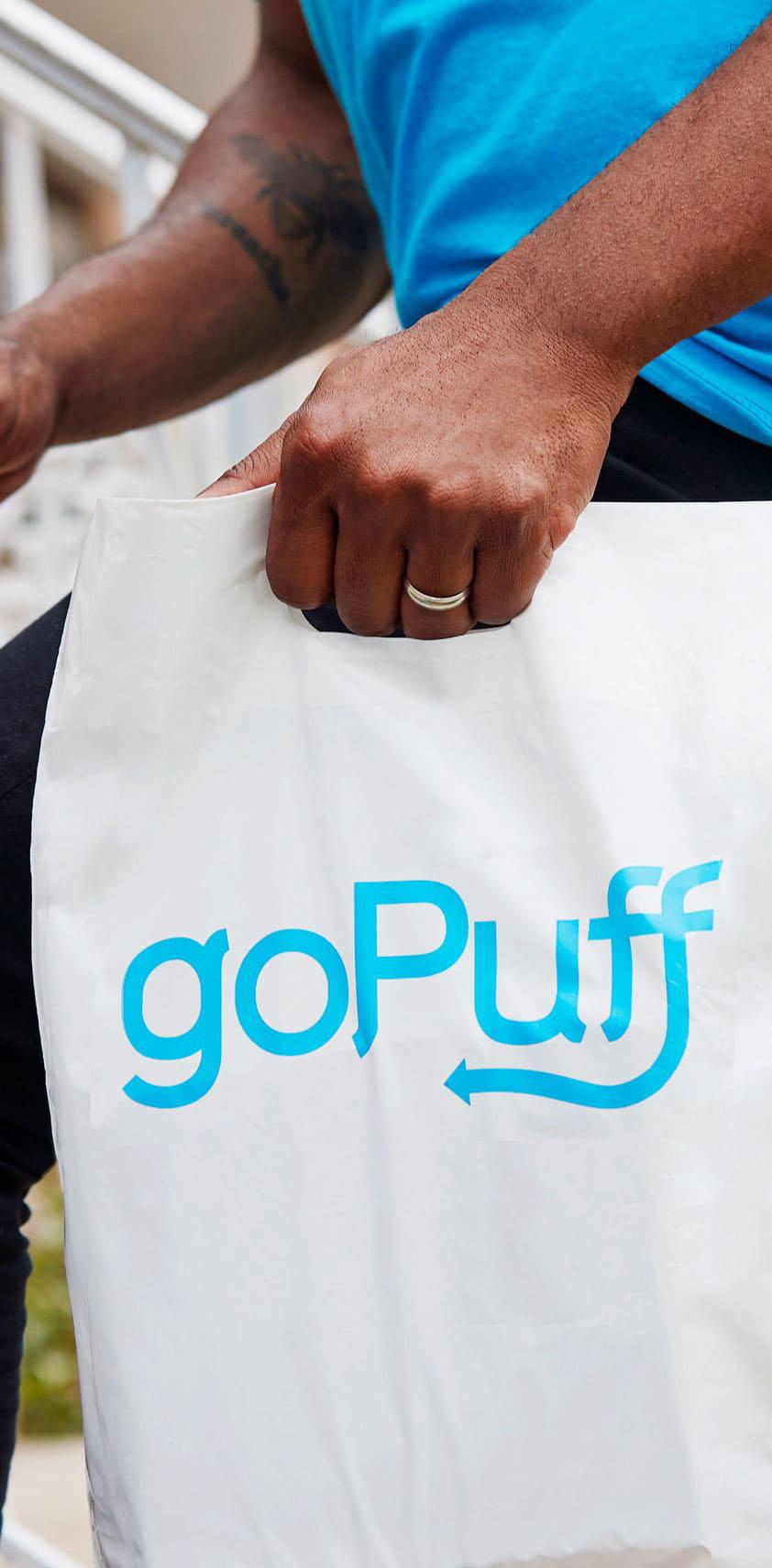
With respect to sites, meanwhile, a growing number of convenience operators are beginning to incorporate curbside pickup into their planned and existing stores. Here again, careful consideration must be given to the effects of this option on site logistics and the customer journey.
Hybrid stores should be designed holistically, with space and circulation requirements baked into the calculus from the beginning. The questions here are practical: Where will those cubbies for pickup of online orders be placed in the store? How much square footage will they require? How will they affect the pedestrian flow through the building? Store design can and should be used to optimize such amenities based on the answers. Gopuff.com


Forget about “blurred lines” between c-stores and elevated food retailing. At HFA and Bona Design Lab, we believe those lines should be erased altogether. That’s why we encourage our partners in the sector to fully embrace the new possibilities that are increasingly available to them as they move forward with innovative food service strategies. Our job is to support those innovations by deftly integrating them into sites and stores, functionally and aesthetically.
And fortunately, manufacturers are broadening our clients’ array of food service options by increasingly pushing the envelope, right down to longstanding mainstays such as the humble donut. Take Dawn Foods’ recent partnership with pastry chef Matthew Rice (famed from the Food Network show “Chopped”). The collaboration resulted in the first-ever brioche donut mix aimed at c-stores. With its “satisfying, buttery flavor and dense texture,” it allows companies to whip up the likes of “a brioche honey bun, a savory everything bagel-flavored Bismarck doughnut, or lemony brioche bits.”[vi]
Whole c-store concepts are now emerging with elevated food service as their foundation. A recent example is UPop (short for Urban Provisions Offering Petroleum)—entrepreneur
Paul Nair’s new high-end food and beverage market slated for a Georgia Arco gas station in Atlanta. The plan is for a “highly curated selection” of “chef-driven prepared foods, beer, wine and liquor.” It’s the latest offering from Nair, whose Savi Provisions brand already offers sourced organic foods, wines and spirits at about 20 existing or planned locations around the Southeast.[vii]
Having successfully navigated the disruptions created by the pandemic, c-stores now need to harness the power of site and store design to maximize results as they reopen their food programs and pursue an even greater variety of offerings. Key phrases here include “healthy,” “fresh,” “creatively packaged and merchandised,” “customizable,” “novel” and “surprising.”
An underappreciated reality in the industry is that menus have a direct impact on store planning. Gone are the days when AE and design firms could count on just a few pieces of countertop equipment occupying square footage for the food service component of a newly built store.
Increasingly, today’s c-stores essentially are QSRs, with equivalent needs for preparation and storage space as well as back-of-house/ kitchen equipment. In their partnerships with AE and design firms, c-store clients need to put food service strategies—down to specific menu items and the types of equipment required to produce them—front and center. This is true regardless of whether it’s a brand-new location or a retrofit of an existing store.
A confluence of trends points to the likelihood of elevated approaches to packaged foods becoming increasingly important in c-stores’ food service programs—certainly for the short term and possibly longer.
Given their limited square footage, existing stores often have little space for make-ityourself food service bars. Moreover, it is still unclear whether most guests will feel
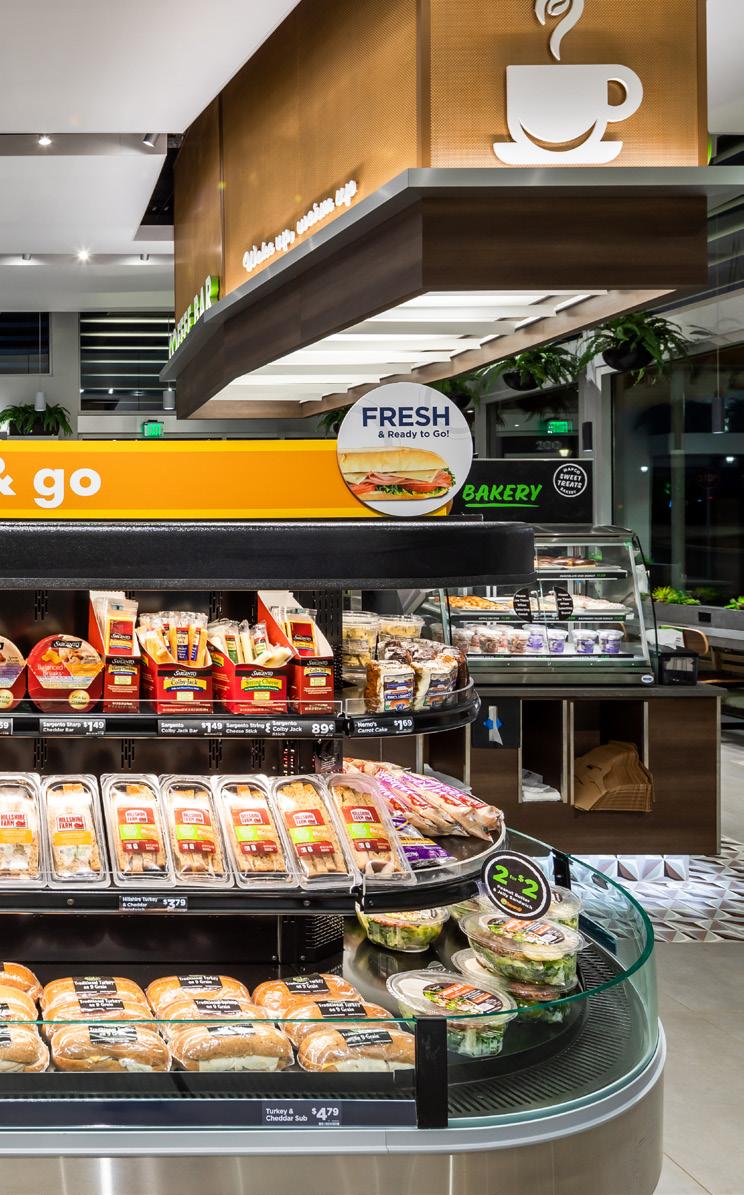
comfortable with pre-pandemic food service behaviors (such as utilizing self-serve counters) in the short term. Note that with the pandemic in full swing during Q2 2020 commissary was the only c-store food service category to grow in sales. Largely made up of prepackaged foods, the commissary category “conveyed a sense of safety and confidence among c-store shoppers concerned about COVID-19.”[viii]
Guests may be ready to stand shoulder-to-shoulder with others in front of a sneeze guard relatively soon, but there are still solid reasons to focus on elevated approaches to prepackaged foods: They save space, require less labor in terms of waste and cleanup, and are easily scannable for self-checkout.
The challenge is to offer prepackaged foods that are highly appealing from the standpoint of taste, novelty and ingredient quality—and to merchandise them in eye-catching ways. Toward that end, c-store clients may opt to rethink store layout and design in a bid to celebrate (through location, lighting, signage, color palettes and more) displays of these new SKUs.
TAKEAWAY: The size of important food service equipment such as combination microwave/ convection ovens continues to shrink, enabling c-store clients to “claw back” square footage that can be put to more productive uses.

While open-kitchen designs for cuisine prepared on site can be a dramatic way to convey the quality and seriousness of your food offer, the drawbacks can be significant as well. They include the need for large and expensive commercial hoods and ventilation equipment, as well as required ancillaries such as fire-suppression and alarm systems.
Generally speaking, compact and efficient approaches tend to work best in c-store food service. Continually monitoring the evolution of equipment to look for opportunities to reduce square footage, and possibly increase automation, is a best practice for AE and design firms as well as their c-store partners.
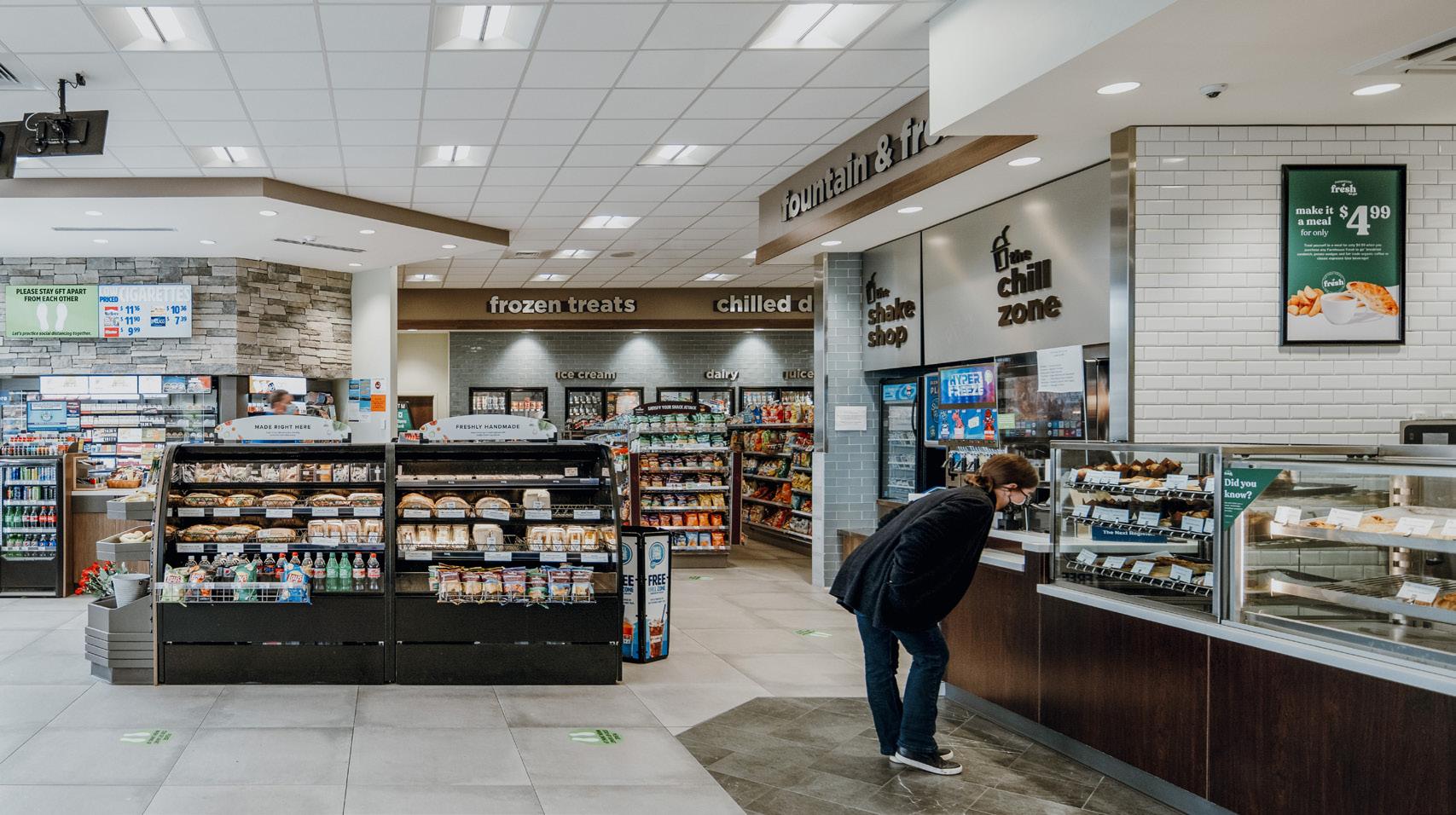

What does Sigmund Freud have to do with convenience retailing?
A lot, actually.
As you may recall from Psychology 101, Freud’s model included the id (our wild, instinctual desires), the superego (the moralizing part of us that aims to squelch all of that) and the ego (the realistic mediator between the two).
In working with c-store clients, we routinely see the interplay of these different elements of the human psyche. At a single c-store, a shopper in “id mode” could pick up alcohol, tobacco or vaping products, while a person with the superego on their shoulder could buy a copy of Yoga Journal magazine, a lemon-kale smoothie, and a bottle of lavender aromatherapy oil.
The potential profits from cannabis sales are a great example of some of the challenges and opportunities the industry faces with respect to ongoing cultural shifts.
Recreational use of cannabis is legal in nearly 20 states, but right now it cannot be sold in c-stores. However, industry stakeholders are already laying the groundwork for that to change. C-stores, they note, have a long history of selling age-restricted products in a safe and compliant way. Why shouldn’t cannabis be an option as well?[ix]

TAKEAWAY:
In the United States, federal-level legalization of recreational cannabis would make c-store sales far more viable, at least in some localities. Already, thousands of c-stores sell nonpsychoactive CBD products. According to some advocates, we will one day see the routine sale of THC-infused gummy bears, lollipops, beverages, and the like at c-stores; these products, they maintain, will be kept physically apart from other SKUs in much the same way that tobacco is restricted currently. Open counter displays filled with jars of “weed” will not be necessary—just a few prepackaged products will do with minimal square footage required.
Clearly, industry leaders are watching the trend closely. Circle K, for one, has reportedly invested in Fire & Flower Inc., a cannabis retailer that has opened its first two stores adjacent to (not within) Circle K locations in Alberta, Canada. Convenience stores’ main profits, writes one analyst, come from soda and food sales, which “pair nicely with cannabis purchases.”
Forward-thinking c-store clients routinely work with AE and design firms to game-plan potential stores of the future. Such efforts should include the specifics of how cannabis sales could work in different types of locations. Legal and risk-management experts should be central to these discussions, which will involve questions such as how new federal laws could interact with state and local restrictions, or how far c-stores in different states will need to be from churches or schools if they begin to offer THCcontaining products.
As today’s c-store clients contemplate the likes of greater openness to recreational cannabis, they need to think carefully about how embracing such societal shifts could affect all aspects of their business—brand image, store layout and design, riskmanagement, site-selection, security, and more.
As noted, some of our recent work at HFA and Bona Design Lab has involved adjusting store layouts in response to tighter restrictions imposed by local jurisdictions on alcohol, tobacco and vaping products. It is likely that in some states, cannabis sales at c-stores may only be possible if there are separate entrances, as well as dedicated personnel. The architectural and engineering questions here are relatively straightforward. However, considerations around branding—the impact of these new operations on the look and feel of the store and the impression it creates in the mind of the consumer—may well be more challenging. Certain operators pride themselves on their familyfriendly brands. What happens if they offer cannabis sales in a section of the store that looks to some like “a shady backroom”? How could the mere availability of cannabis at their stores, even if discretely handled, affect their brand image?
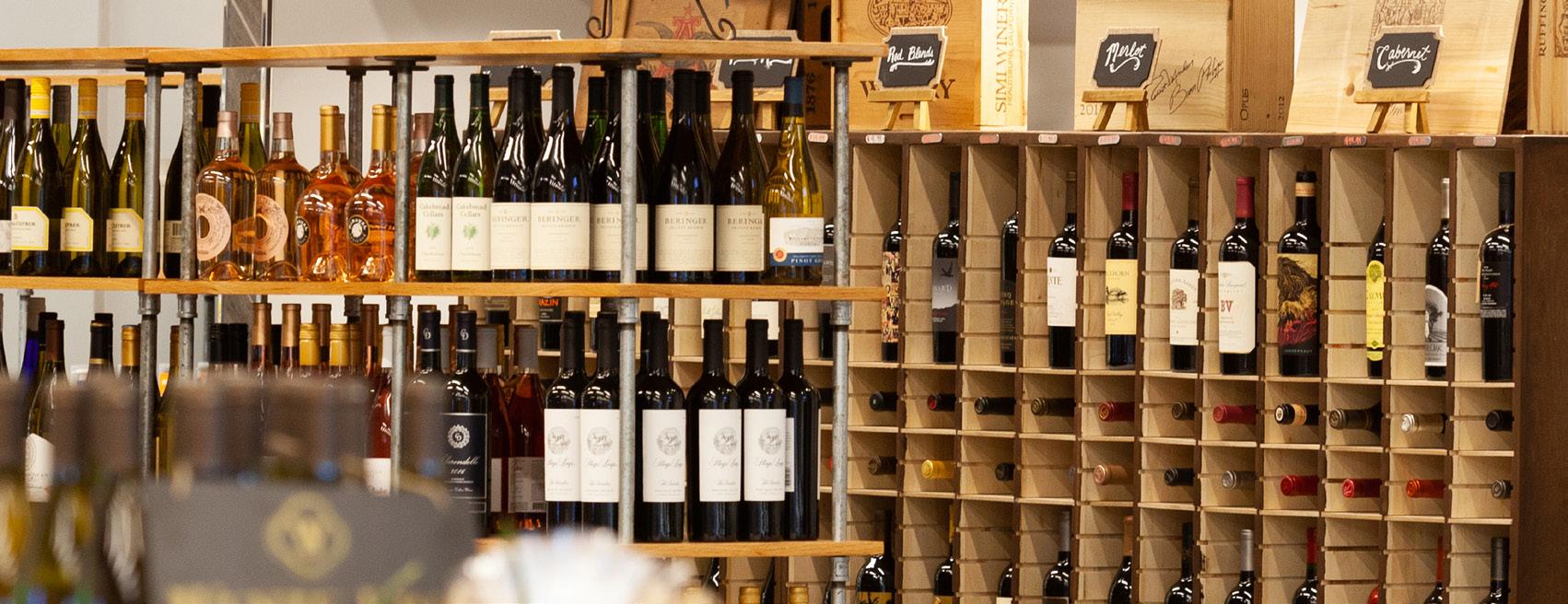
The moderating influence of the ego, in the Freudian sense, could be part of the solution: Companies and their AE and design partners may seek to find a muted, properly balanced approach to cannabis branding, as has often been attained with alcohol and tobacco sales.
In other cases, the answer may lie elsewhere in the psyche: A family-friendly chain in the Southeast could flatly decline to sell cannabis (superego) and even create some messaging around this stance. Or a larger company with an established brand could spin off a new concept geared toward being a hotspot for cannabis sales (id); the new entity would allow the company to protect its original brand’s hard-won equities.
Moving forward, c-store clients and their design and AE partners should redouble their efforts to stay informed about emerging consumer trends. C-stores have always been affected by demographic shifts, product innovations and regulatory changes. This will continue to be the case as they further diversify their offerings to meet more of their consumers’ daily needs...and wants, too.

Does the future theme of convenience retailing design include “electrify everything?” We think so, but with plenty of caveats. You can already see examples of the new era of electrification at Circle K’s massive c-store in Bamble, Norway.
The large-scale site was designed to be a hub for electric vehicle (EV) owners. At the time of this writing, 28 different EV charging stations—eight from Circle K and 20 from Tesla—were up and running at the Bamble location. It was built with the capacity to add 12 more EV chargers as demand grows.
All told, Circle K’s portfolio of c-stores in Norway offer a total of more than 500 high-speed EV chargers, some of which are company-owned, others provided by the likes of Tesla or Ionity. Circle K has even started replacing fuel pumps with EV chargers at certain downtown Oslo sites. [x]
But back to those caveats. Norway, of course, is an outlier—by far the global, per-capita leader in electric vehicle adoption. Last year, EVs accounted for about 54 percent of all new vehicles sold in the Scandinavian nation. That compares to about 2 percent stateside during the same period. [xi]
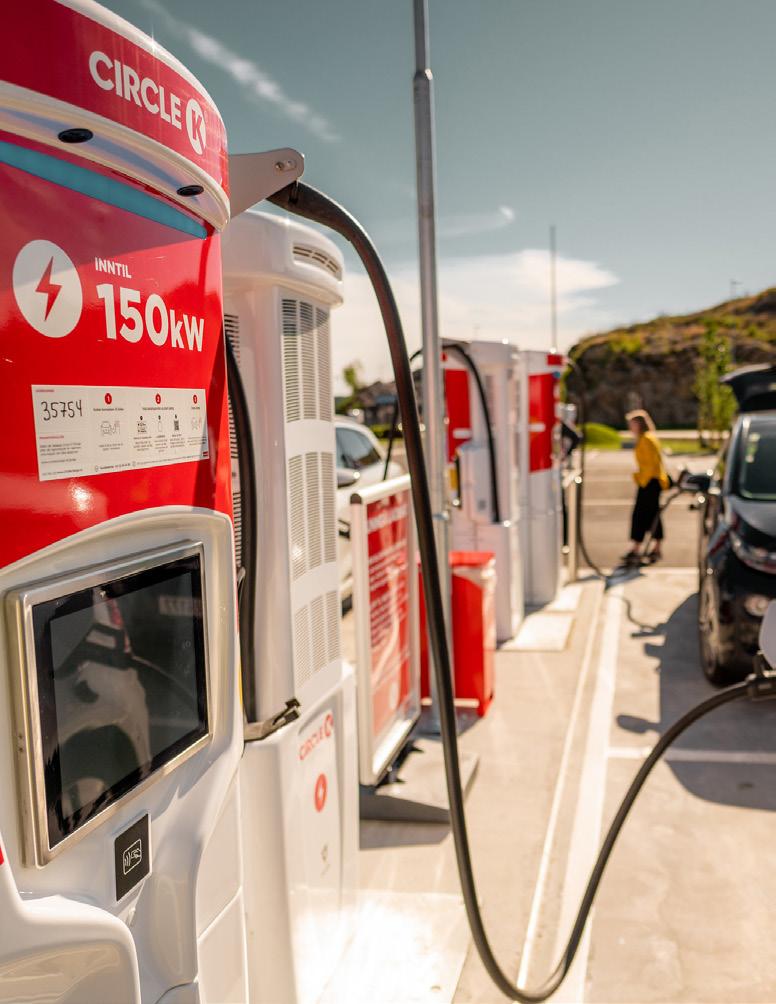
The question of how electrification will play out at the level of sites and stores is taking on increasing importance. As AE and design firms prototype various EV-centric concepts with their c-store clients, it makes sense to bring in technologists, energy analysts and policy wonks, too. The goal should be to understand how improving technologies, evolving utility policies and the potential actions of state, local and federal regulatory bodies could affect the economics and specs of charging infrastructure.
With respect to timetables, the need to install EV chargers at convenience retail locations will continue to vary. C-store clients that operate in markets with the highest rates of EV adoption (most are in China and Europe) need to tackle these questions immediately. In much of the rest of the world, it will be years before the average c-store replaces fuel pumps with high-speed EV chargers.
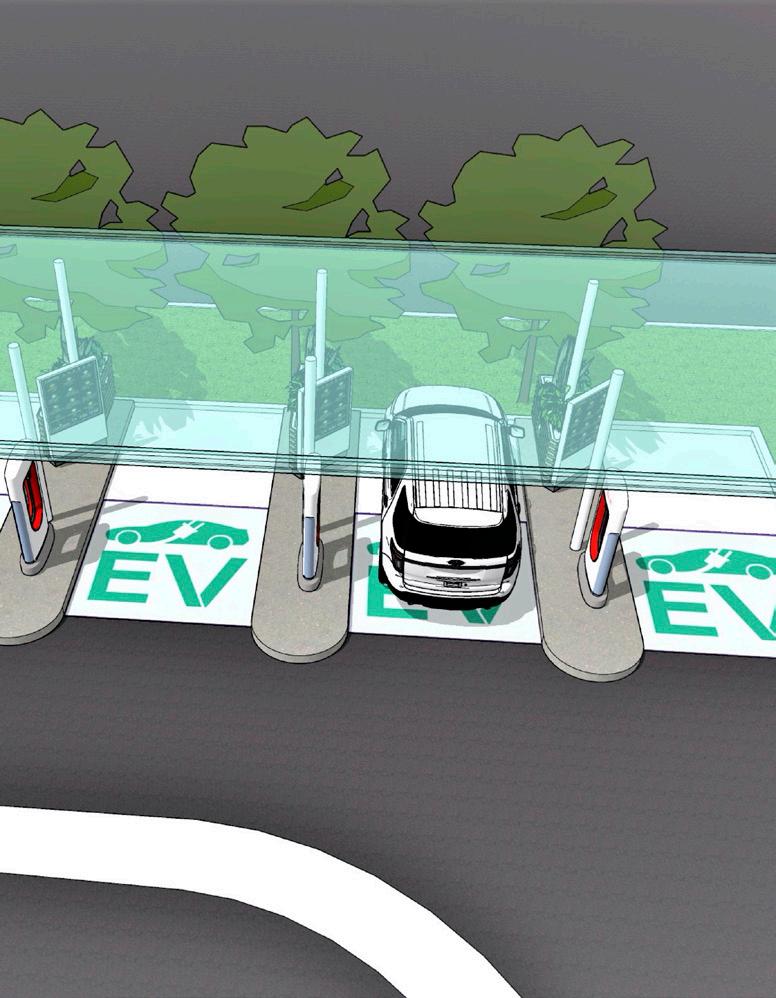
All of that said, major automakers like GM, Volvo and Volkswagen have announced plans to phase out combustion-engine vehicles, and new models like the Ford Mustang Mach-E, BMW iX and Volkswagen ID.4 (not to mention the gamut of Tesla’s fast-selling cars), are broadening consumer choices. Against this backdrop, the number of EVs on U.S. roads could reach 18.7 million by 2030, up from 1 million at the end of 2018, and the global number is predicted to reach 245 million by 2030, more than 30 times today’s level.[xii]
As EVs become more commonplace, c-store clients will face a raft of business decisions, many of which affect sites, stores and the customer experience. These include:
• Whether to install EV chargers at all
• How many to install
• The role, if any, of third-party providers
• How to integrate EV charging into digital pay/loyalty ecosystems
For a more in-depth look at some of the complexities of the charging space itself, we recommend the pwc report “Electric Vehicles and the Charging Infrastructure: A New Mindset.” Among pwc’s conclusions: “…we estimate the total [U.S.] fast-charging
network in 2030 to be close to 60,000 locations with at least some of these—perhaps most—at existing gas stations.”
Third-party EV charging companies—including the likes of Tesla, Electrify America and EVgo, to name a few—are already offering retailers an array of options and will likely play a major role in the coming expansion of EV charging infrastructure at c-store sites. In many cases, these companies pitch retailers on the idea that charging stations will be traffic drivers that build brand loyalty—an assertion that, while not powerfully true in many North American markets today, could become truer in the future.
Third-party business arrangements can include situations where:
• The third-party operator covers all the costs (capital, operating, construction, permitting and maintenance) in exchange for being allowed to install the charging station on site;
• The retailer buys the EV charging station or stations outright, determines the pricing, and keeps 100 percent of the generated revenue; or
• The retailer pays for the electrical infrastructure, with the third party installing the charger at no cost and the two parties then splitting the generated revenue.
The critical point here: The EV charging revenues in question, at least for now, will likely be nothing close to what conventional fuel pumps already generate at c-stores all over the world. As some analysts see it, EV drivers will continue to charge their cars at home or at work, where electricity costs a lot less per kilowatt hour, with c-stores being used in emergencies, to “top off” an existing charge (much as we keep our phones at 100 percent) or when far from home. [xiii]
That picture could change for the better with massive public- and private-sector investment in EV charging infrastructure—including jettisoning
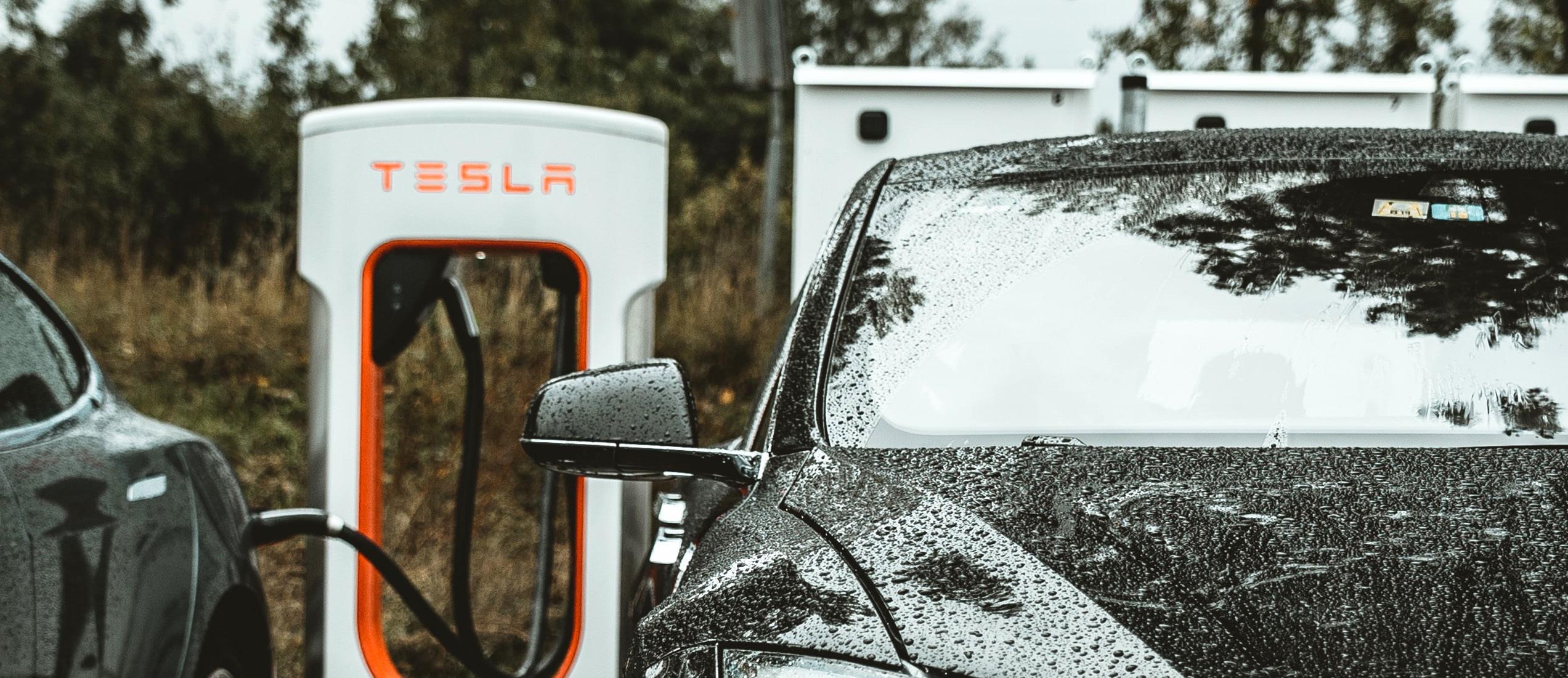
TAKEAWAY:
Apps hold powerful potential to drive visits to c-stores that maintain EV charging stations—indeed, a variety of apps (including some offered by third-party EV charging companies) already steer drivers to sites that offer EV charging. C-stores could easily benefit by integrating their own promotions into these offerings
unfavorable rate policies maintained by many utilities and creating a wide array of new incentives designed to make charging infrastructure more cost-effective.
In addition, energy-storage systems are getting cheaper and better all the time. At larger sites, it may be possible for c-stores to use solar arrays to sock away free energy and/or store grid energy during times of sagging demand (when utility rates are lowest). The savings could enable these clients to drive more traffic by offering EV charging at highly competitive rates.
“Charge your car in the month of July and get our new Southwestern Chicken Sandwich for 50 percent off.” Those that own and operate EV charging infrastructure could likewise integrate charging information and promos into their existing digital pay and loyalty apps.
With respect to site plans, longer charging times give c-stores the opportunity to roll out amenities and product offerings that keep customers engaged—and spending money—while they wait. Examples could include stronger food service programs offered within larger dining areas (equipped with Wi-Fi connectivity), or in-store countertops with phone chargers and digital menu screens (for the café or other food offerings).
Historically, c-stores have paid a certain brand penalty due to the role of petroleum in
many chains’ portfolios. The shift to electrification offers greater potential to build brands around sustainability and all things clean and green—a potential competitive advantage as these clients cater to younger generations focused on active and authentic lifestyles, fresh produce, healthier food, and the like.
As people who are charging their cars go inside the store to wait, retailers will also be able to use store design—gondolas, end caps, signage and more—to spur more impulse buys.
TAKEAWAY: As c-store visitors wait for their on-site EV charges to finish, this could translate into a greater overall need for space and/or the reallocation of space on existing sites. Moving forward, convenience retail clients and their AE and design firms will likely need to take a more flexible approach to store prototypes—supersized sites with two dozen EV charging stations, mid-sized models with just a few, and mini-stores with one or none. A modular approach to design could drive greater prototype flexibility.
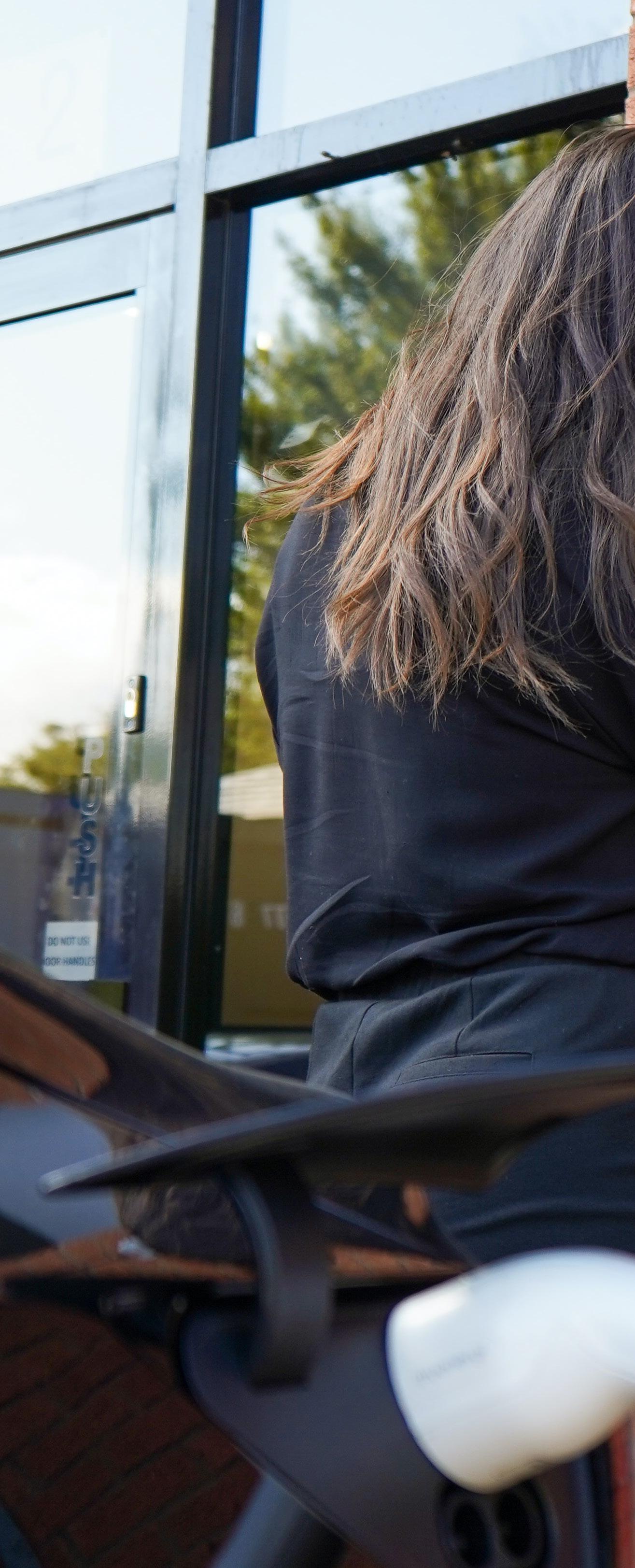
In tandem, we will likely see new technological complexities at larger c-store sites— including connected solar arrays and battery systems that are designed to help maintain the stability of the larger grid by storing and sharing energy in small amounts as needed.
Meanwhile, new building codes continue to force retailers to improve building efficiencies—a trend that is likely to accelerate. AE firms will continue to redesign and optimize sites and stores to meet these new energyefficiency requirements—everything from more thermally efficient walls and roofing systems; to computer-controlled lighting systems; to buildings designed to minimize air leakage. The goal should not be mere compliance—companies should stay on the lookout for the coming wave of government incentives (local, state and federal) that stand to make their ambitious new c-stores and retrofits more economically viable.
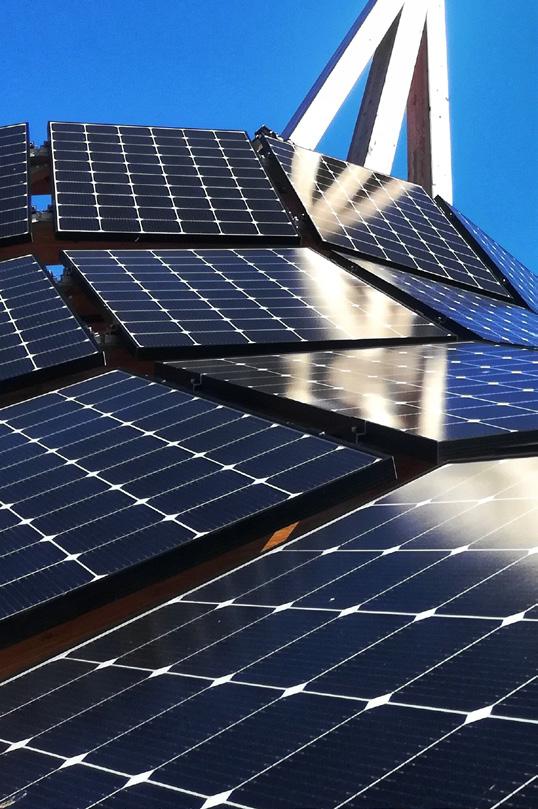
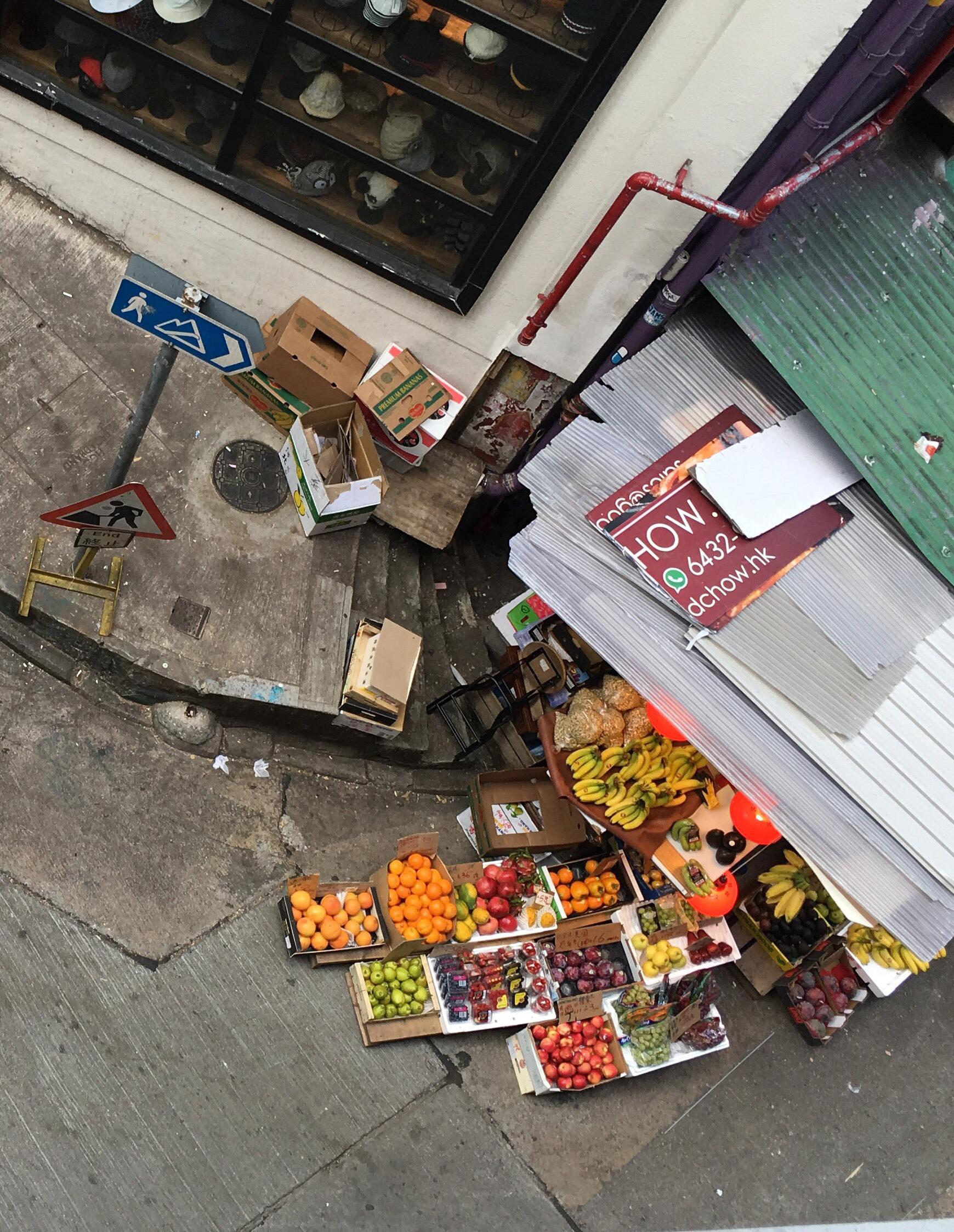
Tech is playing a bigger role in the dialog about the future of c-stores, and so one of our predictions—call it “The Return of the Corner Market”—may seem a bit counterintuitive.
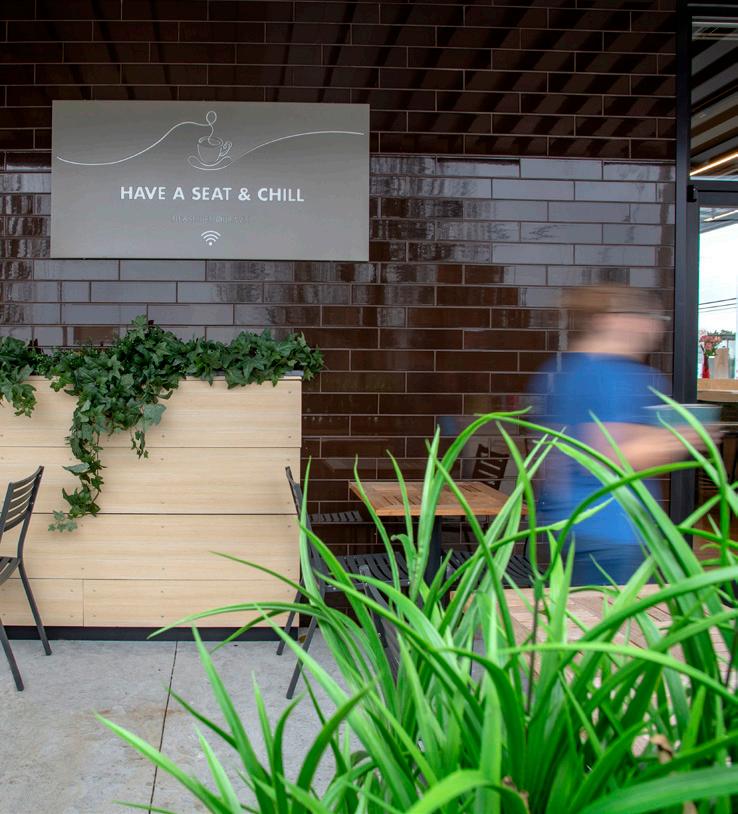
As we gradually get closer to the post-pandemic era, many c-store leaders are now refocusing on giving customers the social interaction they’ve been missing, and on making sure their stores convey a strong sense of local identity. It’s a smart play that stands to strengthen their efforts to maintain market share and loyalty amid channelblurring and ecommerce commoditization.
For a bit of context, consider how the world’s first convenience store got its start. Aiming to make life easier for his customers in Dallas, Texas, the entrepreneur Jefferson “Uncle Johnny” Green started selling everyday staples from the dock of an icehouse. During the post-Prohibition 1930s, beer and liquor became available, and as the concept took off in multiple locations, what was then known as Tote’m Stores finally became 7-Eleven—a nod to the chain’s newly extended hours. Gas pumps were added in the 1950s as driving took off and 7-Eleven launched a new wave of one-stop-shop locations. [xiv]
What you see here is the story of a business—and now a global industry— continually pivoting to respond to small and large shifts in consumer behavior. And one of the most recent and potentially important shifts, in our view, is the rediscovery by millions of Americans of their neighborhood corner market.
During 2020, the average market basket size at U.S. c-stores jumped nearly 10 percent, and average monthly in-store revenue consistently outperformed that of 2019. [xv]
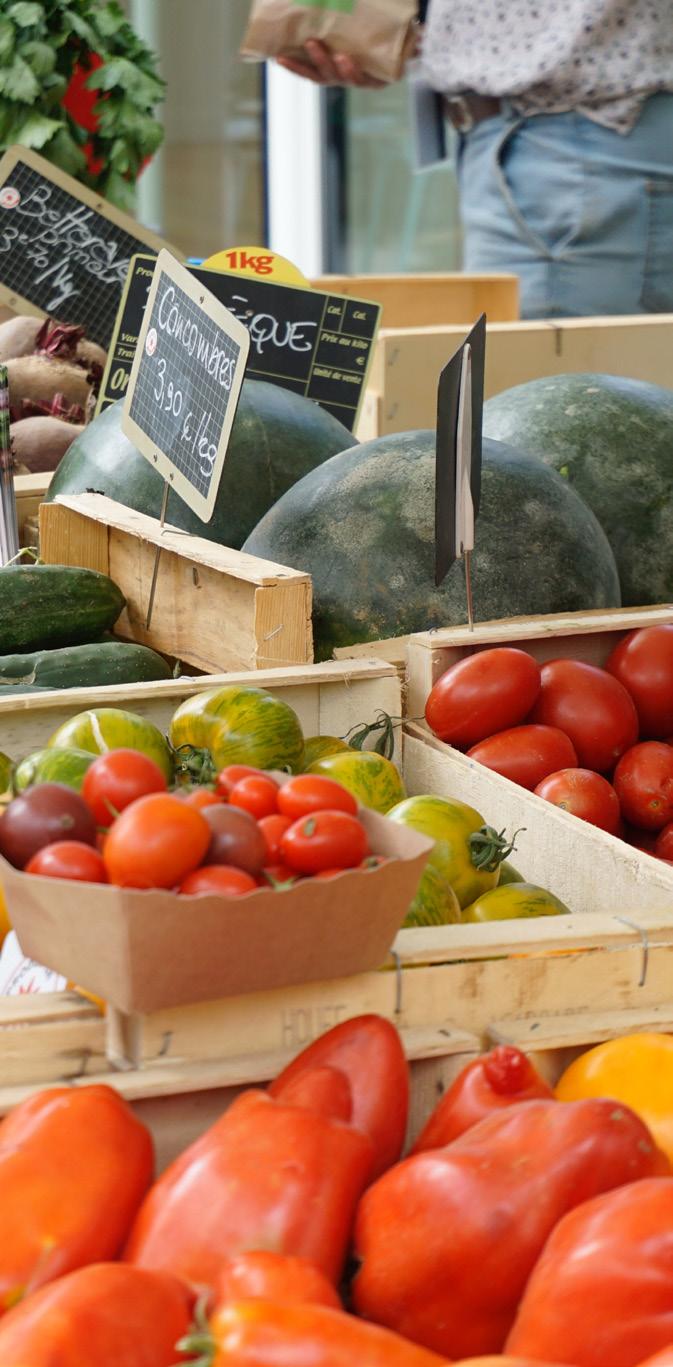
The reason is simple enough: As consumers became more conscious of crowded places, they started shopping more at the stores that were right in their own neighborhoods.
During this time, our convenience-industry clients worked hard to strengthen their relationships with new and existing customers.
In this context, we’re consulting with these clients on a range of potential ways to preserve and amplify “that neighborhood feel.” None of these approaches conflicts with ongoing efforts to ramp up tech offerings or to configure site plans that function efficiently in terms of operations, logistics and traffic/ pedestrian flow.
USE PRODUCTS AND THEIR NAMES, INGREDIENTS AND FLAVOR PROFILES TO ADD A LOCAL TOUCH. That could be branded shrimp-and-grits at a store in South Georgia or a locally made, contest-winning cheesesteak in suburban Philly. That doesn’t mean you have to scale back Budweiser, Coke and Lay’s: Just a few prominently placed, locally branded SKUs can make a huge difference.
OFFER OPPORTUNITIES TO TOUCH AND
THE MERCHANDISE. Certain shoppers will continue to prefer picking up products, inspecting their labels, and physically comparing them with other offerings. So even as you add the likes of contactless vending machines, make sure you also have more traditional options such as open chillers filled with fresh-made sandwiches.
LEVERAGE INTERIOR DESIGN. Convenience retail leaders are adept at using tangible and visual cues to create friendly, welcoming experiences. Design is really just storytelling—it’s how c-stores communicate their brand message and create a sense of place. Basic building blocks here include lighting, materials, colors, and graphics, all of which can be deftly used to emphasize human connection and that local touch. The key is to “keep it real” and strive for a unified and authentic experience.
GET
SPACES. Like “Uncle Johnny” Green in 1937, many c-store clients are looking for new ways to enhance their customers’ lives. In select markets with larger sites and lower real estate costs, some c-stores could use outdoor space more creatively. In one community, picnic tables, free WiFi and a food truck with outof-this-world fish tacos could make all the difference. In another, the store’s location next to a popular, multi-use trail could create an opportunity to offer customers a bike repair station, water fountains for their dogs, and an outdoor gourmet coffee stand.
Our intention here isn’t to deemphasize technology; it’s to point out the power of centuries-old retail fundamentals. Ultimately, motivating people to shop your stores is all about your ability to connect with them at every touch point.

James is a licensed architect with more than 19 years of experience in various projects, including retail, convenience stores, healthcare, animal care, and historic restoration. As a Vice President at HFA, James is a mentor to colleagues and coordinates with all disciplines to ensure successful and timely project completion. He’s also responsible for keeping the project team focused on their specific goals and objectives. With his expertise in retail design, James leads dedicated and highly specialized design professionals. They lead the industry in creating innovative design initiatives to improve a customer’s in-store experience and increase in-store purchases.
Joseph Bona, Bona Design Lab Founding Partner & President Executive and DDI.

Joseph@BonaDesignLab.com 917.664.4418
Joseph brings a global perspective and extensive retail design experience across all sectors, from convenience and mass market to drug and luxury. Prior to founding Bona Design Lab, Bona was a founding partner and president of the retail design firm GroupRed which was merged with CBX in 2006 and where Bona served as president of the Branded Environments practice; prior to that he was president of CDI Group. During his career Bona has directed a wide range of initiatives for such companies as Hess, Topaz, PetroChina, MOL, AMPM, Wawa, Duane Reade and Saks Fifth Avenue to name a few. He was previously featured on the Discovery Channel’s Modern Marvel series bringing his expertise on store design to television and, he has been a regular speaker at NACS in the US, Insight/NACS in Europe and has also presented at several other domestic and international trade events including: Global Shop, Euro Shop and IGDS. His work has led to numerous international design awards and many of his projects have been published in publications such as Visual Merchandising and Store Design, Chain Store Age Executive and DDI.
[i] NACS Daily: “Wawa, Dash In, Enmarket Upgrade Digital Experiences,” May 6, 2021
[ii] Scandit.com: “Jisp and Scandit Help Convenience Stores Digitise with a Scan & Go App on Smartphones,” July 21, 2021
[iii] ICSC: “A fulfillment-center startup wants to backfill urban retail,” May 18, 2020
[iv] Logistics IQ: “Micro Fulfillment Market (E-Grocery Fulfillment),” December 2020
[v] CNBC: “2021 CNBC Disruptors,” May 25, 2021
[vi] CSP Daily News: “Dawn Foods Launches First-Ever Brioche Doughnut Mix for Convenience Stores,” May 28, 2021
[vii] CSP Daily News: “Peachy Idea: High-End Food, Beverage C-Store,” June 14, 2021
[viii] CSP Daily News: “C-Stores See Record Inside Sales in 2020: NACS,” April 14, 2021
[ix] CSP Daily News: “Why Cannabis Is Right for C-Stores,” Sept. 18, 2020
[x] circlekbiggame.com: “Circle K Loves Norway—We’re Ready,” Feb. 7, 2021
[xi] Reuters: “Electric cars rise to record 54% market share in Norway in 2020,” Jan. 5, 2021
[xii] Edison Electric Institute: “Issues & Policy: Electric Transportation,” July 2021
[xiii] Forbes.com: “Can Electric Car Charging Be a Business?” Jan. 25, 2021
[xiv] Corp.7-eleven.com: “The 7-Eleven Story in Years,” June 28, 2021
[xv] CSPDailyNew.com “COVID-19: 1 Year Later,” June 18, 2021